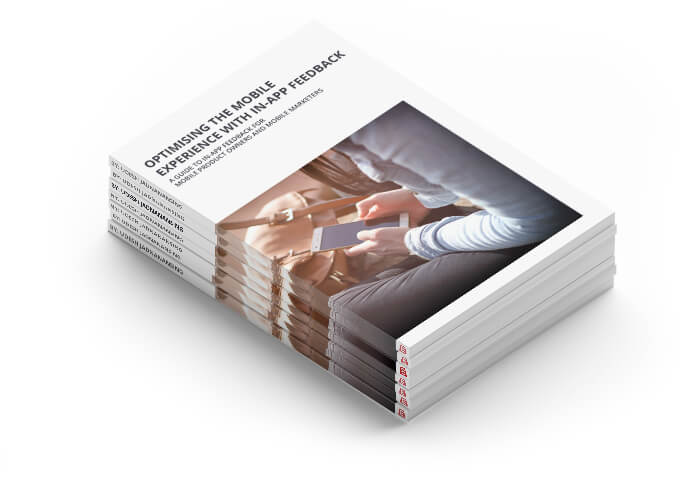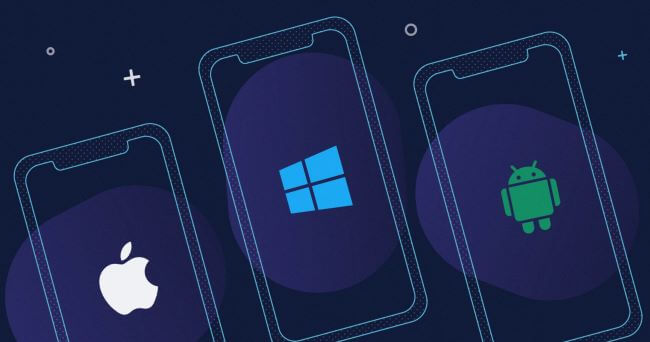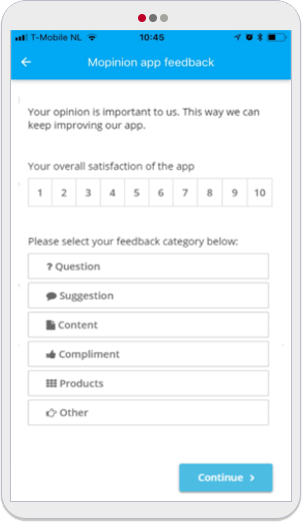Remember when everyone kept talking about ‘the year of mobile’? We sure do… but as it seems, this ‘year’ has finally come and gone. As a matter of fact, mobile seems to be the standard nowadays – which means that on top of ensuring your mobile channel is running smoothly, organisations will now have to provide a competitive mobile experience or better yet, the ultimate mobile experience. The question is: how? How can your organisation shape and maximise the mobile experience so that it surpasses user expectations?
The answer lies in mobile feedback…
Pursuing the ultimate mobile experience
It is predicted that in 2022, there will be around 6.37 billion smartphones worldwide. That’s nearly 84% of the world’s population; a considerable amount compared to 49% in 2016. As a result, this influx in smartphone users has compelled organisations to step up their mobile game. While the focus was previously on simply providing a responsive app with a user-friendly interface, it is now the delivery of a smooth and competitive mobile experience as a whole.
What is a good mobile experience?
Delivering a good mobile experience means providing a mobile-friendly website or app that is engaging, with purposeful and responsive design that is both easy to use and navigate. Additionally, the experience should be effortless and limit the amount of steps it takes for the user to perform key tasks.
People are naturally excited by technical innovation. They are fascinated by all things ‘new’ and – carpe diem – they want to turn them to competitive advantage. To do that effectively, though, you need to think about the total mobile experience and not merely focus on the screen or the interface.
However, this new focus has proven to be a real challenge for a lot of organisations. Where do they start? What should they measure? And how can they be certain they’re putting out a product that they know their users will love?

For starters, many organisations now rely on digital tools to help them monitor and measure their mobile performance and experience. These mobile analytics tools range from quantitative in-app analytics tools that measure the hard user data, to qualitative analytics tools that gather soft user data, such as mobile feedback.

Free Whitepaper: Mobile Experience Optimisation with In-App Feedback
A guide to in-app feedback for mobile product owners and mobile marketers.
How mobile feedback contributes to the mobile experience
Mobile feedback is one of the few user feedback solutions that has a direct impact on the mobile experience. This is because in addition to measuring hard metrics such as Net Promoter Score and CSAT, mobile feedback can also provide your organisation with the sentiment behind user behaviour, through mobile survey elements such as open comments. This qualitative data provides a deeper understanding of your mobile users, thus equipping your organisation with the means to cater more effectively to their needs.
So let’s take a look at what mobile feedback tools can do for your organisation…
Mobile feedback can help you:
- Develop features your users actually want. Many businesses building a new mobile app have tons of exciting features on their roadmap. Our advice? Try starting off little by little, and test as you go. Listen to your users and what they have to say, so you can identify which features are most important.
- Better understand your mobile users. Along with their opinion of your app, mobile feedback also allows you to gather demographic information about your users. Having this information on hand enables your organisation to form personas. If you cross analyse personas with feedback results you’ll be able to create not only a more personalised experience for your users but also develop an app you know they’ll like.
- Keep track of app performance. One of the great things about mobile feedback is that it can give you very specific feedback on, for example, a feature you’ve launched or an update you’ve recently released. You can do this with a number of valuable metrics such as NPS, CSAT, GCR and more.
- Create a unified and consistent experience across all channels. This may come as a surprise, but most customers don’t actually make any sort of distinction between the channels they use, whether that’s web or mobile. From their perspective, they see one single brand. Therefore, by prioritising your mobile experience with mobile feedback, your organisation can provide a seamless experience that blends perfectly with your other channels.

Source: SaM Solutions
A fundamentally different channel
It’s important, however, to keep in mind that while the two are linked in the eyes of the consumer, mobile is a very different channel from web. And this differentiation mainly lies in the process for collecting feedback.
In fact, there are three ways to collect feedback on mobile apps: Webview, API and SDK. Let’s take a quick look at each:
- Webview: Collecting feedback via webview simply requires the user to load a feedback form into the web view using their feedback software provider. The process is basically the same as loading a feedback form (as a web page) into the mobile app shell.
- API: With an API, there are no rules you have to follow. In other words, you have complete control over how you implement your feedback forms. You build it yourself, decide what your feedback forms look like, and choose when and where they appear in your app.
- SDK: An SDK is a downloadable software package that contains the tools needed to build on a platform. Typically, an SDK contains an API or library files (predefined pieces of code to help perform programming tasks), development tools and utilities (e.g. an integrated development environment) and other complementary tools (for tasks such as debugging, building, running) and testing the application).
Using any of these three collection methods will set you on the right track towards improving your mobile experience.
Example of a mobile feedback survey
To illustrate, here’s an example of a mobile feedback survey used to gather insight on customer satisfaction.
Customer Satisfaction (CSAT)
Customer satisfaction is one of the top scoring methods for businesses to measure brand loyalty. Collecting this feedback helps you measure how your brand (or services) are meeting your customers’ expectations. It is also very versatile, as you can use it to understand how customers value different aspects of your business.

CSAT templates are ideal for gathering insights into your customers’ overall satisfaction with your mobile app.
Curious about other ways in which you can gather mobile feedback?
Check out these 5 Simple Templates for Collecting Mobile App Feedback.
Did you know?
Mopinion has several (plug-and-play) mobile SDKs for collecting mobile feedback. Mopinion’s SDKs include a wide range of features and capabilities that further enhance feedback collection and analysis processes and enable mobile marketers to gain more and deeper customer insights than most other feedback SDKs.
Learn more about the Mopinion SDKs here.
Mobile is poised for future growth
By gathering mobile feedback data in your mobile app(s), your organisation will be able to elevate the mobile experience by generating the full picture. From identifying bug issues to pinpointing different user types and understanding their mobile journeys, there is so much to gain from mobile feedback.
And as mobile expectations continue to grow and change among consumers each year, your organisation will need to continuously optimise and maintain a user-centered mobile experience.
Are you up for the challenge?
Ready to see Mopinion in action?
Want to learn more about Mopinion’s all-in-1 user feedback platform? Don’t be shy and take our software for a spin! Do you prefer it a bit more personal? Just book a demo. One of our feedback pro’s will guide you through the software and answer any questions you may have.







